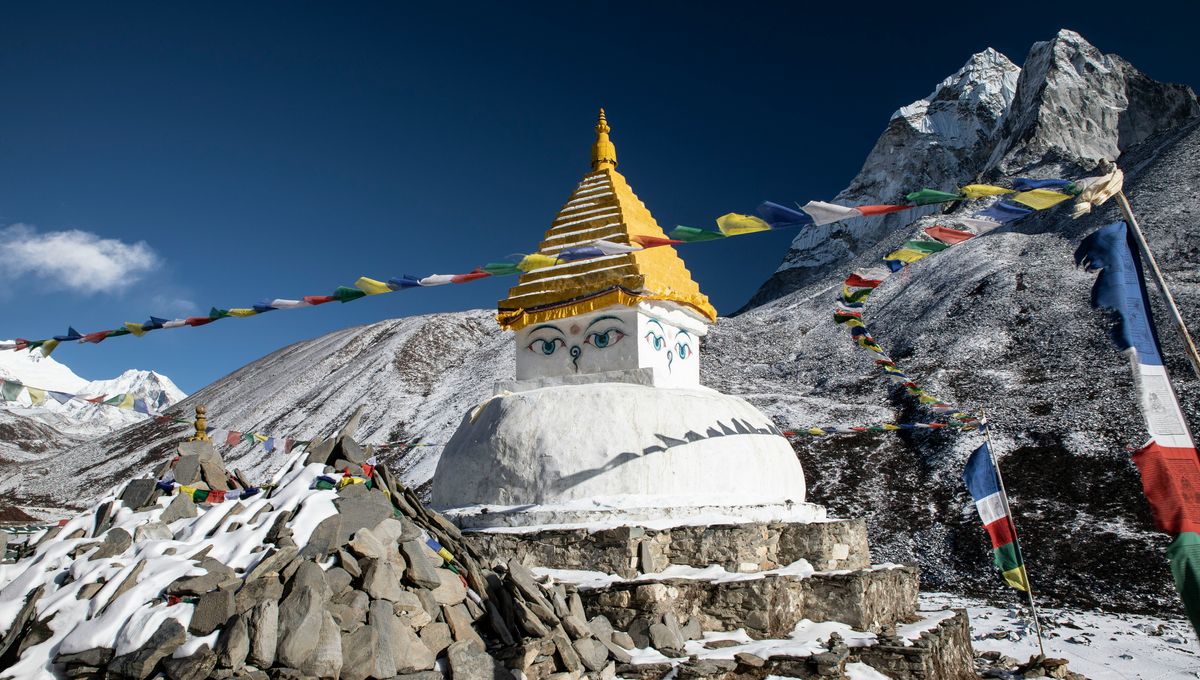
The tallest mountain in the world is named after George Everest, a British geographer of India who has very little direct connection to the mountain. Some doubt whether he had even laid eyes on the towering landmass.
Although no doubt honored, even he thought it was a bad idea to name the mountain after his surname because it was difficult to write in Hindi and many native speakers found it difficult to pronounce. However, it wasn’t just locals that struggled with the name. It turns out, that if you’ve ever uttered “Mount Everest,” you’ve probably been saying it incorrectly.
George Everest pronounced his surname “EVE-rest,” with the first syllable rhyming with “sleeve” or “breathe,” as opposed to “EVER-est” or “EV-rest,” according to Mental Floss.
Why was Mount Everest named after George Everest?
The reason why Mount Everest was named after Sir George is a strange one as he had nothing to do with its first official survey in the colonial era, nor the calculation of its height.
Sir George Everest was Surveyor General of India from 1830 to 1843 who played an important role in the Great Trigonometrical Survey of India, a mission to map the entire Indian subcontinent with scientific precision. As a vast and diverse land, filled with huge features including parts of the Himalaya mountain range, this is no small feat and the project took almost 70 years to complete.
When Everest was at the helm of this survey, the skyscraping mountain was simply known as “Gamma,” then “Peak B” and later “Peak XV” – not exactly iconic.
It was Sir George’s successor, Andrew Scott Waugh, who was leading the project when the height of Peak XV was calculated by Radhanath Sikdar, an Indian mathematician, revealing it as the highest mountain in the world (by many metrics).
Upon realizing its record-breaking credentials, the powers that be felt it was time for a name change. In 1856, Waugh wrote to Henry Thuillier suggesting the grand mountain should be named after his predecessor and beloved mentor, George Everest.
“I was taught by my respected chief and predecessor, Colonel George Everest, to assign to every geographical object its true local or national appellation. But here is a mountain, most probably the highest in the world, without any local name that we can discover, whose native appellation, if it has any, will not very likely be ascertained before we are allowed to penetrate into Nepal, and to approach close to this stupendous snow mass,” the letter reads.
“In the meantime, the privilege, as well as the duty, devolves on me to assign this lofty pinnacle a name whereby it may be known among geographers, and become a household word. In testimony of my affectionate respect for a revered chief […] and to perpetuate the memory of that illustrious master of accurate geographical research – I have determined to name this noble peak… Mount Everest.”
The name stuck in some parts of the world and, for unclear reasons, a slight tweak to the pronunciation buried itself into the public consciousness.
Renaming Mount Everest
It’s worth pointing out that many places have different names for the mountain. In Nepalese, Everest is known as Sagarmatha, which translates to “Forehead of the Sky,” while Tibet calls it Chomolungma or Qomolangma, meaning “Mother Goddess of the Earth.”
To honor this, there have even been calls to officially rename the mountain, although it looks like those demands have gone mostly unheard.
“It is time for the Western world to respect us Tibetans by recognizing the highest peak on Earth by its Tibetan name, Qomolangma,” Gelek, an esteemed Tibetan scholar at the China Tibetology Research Center in Beijing, told Chinese media in 2002.
“When Qomolangma becomes the only word for people all over the world to refer to the highest peak on Earth, I, as a Tibetan, will feel very contented,” Gelek added.
Source Link: You're Almost Certainly Pronouncing "Mount Everest" Incorrectly